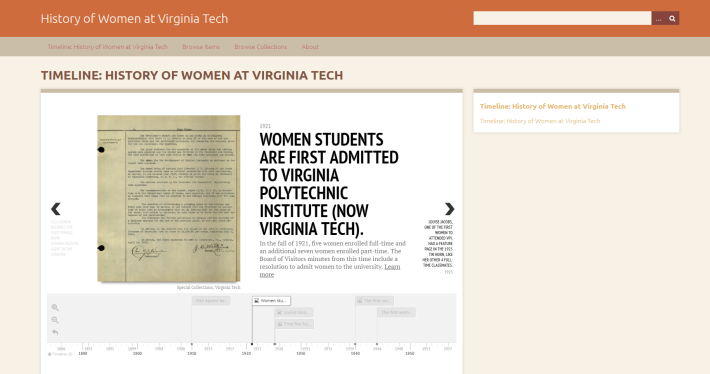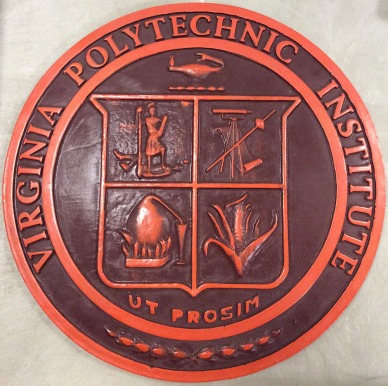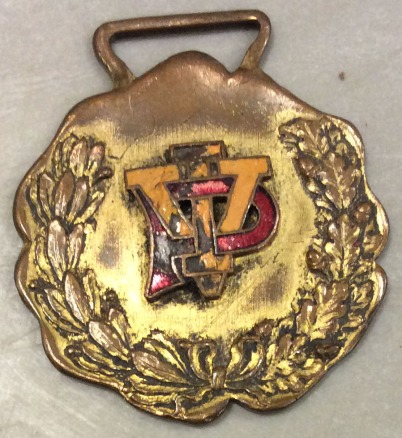We are very pleased to announce that our department has taken on a new addition to our name: Special Collections and University Archives (SCUA, for short). The University Archives have always been a meaningful part of our department, and this name change recognizes its significance in a more visible way.
This is just a recent change in a long line of them in SCUA’s nearly 50 year history. Virginia Tech has been collecting manuscript collections, university archives, rare books, artwork, and historical maps and photographs since the early days of its history, and many of those items constitute the foundations of our department’s collections. However, before SCUA’s establishment, the activities we engage in today were all separate. For example, the rare books were kept in locked cages serviced by the Reference Department, and an Archives section was created in 1968/1969 with Mary Larimer as archivist.
In 1970, the new Library Directory Gerald A. Rudolph formally established Special Collections, combining the rare books, manuscripts, university archives, and historical photographs and maps into one department. The first head of Special Collections was the aforementioned Mary Larimer. During her tenure, she expanded the southwest Virginia collections, such as the acquisition of the J. Hoge Tyler Family Collection, Ms1967-002; began the science and technology collecting area, including the John W. Landis Papers, Ms1969-001; and acquired a number of American literary works through the estate of professor Dayton M. Koehler, including both the Dayton M. Koehler Papers, Ms1971-002 and his rare book collection. The University Archives also expanded, with President Hahn sending all presidential records from before 1960 to the department and encouraging the members of the Board of Visitors to donate their papers in 1973.

In 1979, Glenn L. McMullen became the second head of the department. Special Collections partnered with the International Archive of Women in Architecture, founded by Milka Bliznakov in 1985, and the department established the Archives of American Aerospace Exploration (AAAE) in 1986 with the opening of the Christopher C. Kraft Papers, Ms1985-001. The University Archives collection began to expand with papers and publications of faculty in addition to the official university records already obtained. A number of rare books collections were acquired, including the Bailey-Law Ornithology Collection in 1982 and the William J. Heron Speculative Fiction Collection, starting in 1989.
Stephen Zietz was the third director of Special Collections from 1993 to 1995, and he spearheaded the development of the Friends of the University Libraries, an advisory board to help build collections and funding. During his tenure, Special Collections began collaborating with other departments on campus to digitize some of its collections and launched its website. The Elden E. “Josh” Billings Collection of over 4,000 volumes on the American Civil War was catalog, and processing the university presidents, such as President Hahn’s 100+ box collection, and vice presidents became a priority. The University Archives also began actively collecting materials related to underrepresented and traditionally marginalized groups at the university, such as the Black Women at Virginia Tech Oral History Project, Ms1995-026.

The Director of Scholarly Communication, Gail McMillan took on the additional role as the fourth director of Special Collections in 1995. Both departments were under the aegis of Digital Library and Archives (DLA), starting in 2000 with McMillan as DLA director. From 2001 through 2003, Jennifer Gunter King served as the fifth head of Special Collections, but following her departure, McMillan once again became de facto head in her role as director of DLA.
While part of DLA, Special Collections began digitizing materials in bulk, including the creation of ImageBase and the Bugle yearbooks for online access of these materials. McMillan was also influential in the development of the history of food and drink collecting area, acquiring the Peacock-Harper Culinary Collection in 2000 and the Ann Hertzler Children’s Cookbook and Nutrition Literature Collection & Endowment Fund in 2006. That same year, the department also expanded with a newly renovated reading room.

Following an outside consultant’s report in 2006, Dean Eileen Hitchingham decided to split Special Collections and DLA into separate departments. In 2007, the seventh and current director Aaron D. Purcell was hired. Major developments in the department over the past few years have included the mass creation of finding aids in Virginia Heritage, the first redesign of the department website in 20 years, the active collection of LGBTQ+ history at Virginia Tech and in Blacksburg, expansion of the processing of the University Archives records and publications, and of course, the new and improved name Special Collections and University Archives.

Sources:
- Annual Report, VPI Library, 1968/1969, p. 2, call no. Z733.V5 Spec VPI
- Records of Virginia Tech Special Collections, RG 23h/6/1, in the Records of the Virginia Tech University Libraries, RG 23
- Rg 23h/6/1 and RG 23/7, Record Group Vertical Files
- Annual reports, Digital Library and Archives, VTechWorks
- Internal documents on the history of the department and employees

































































